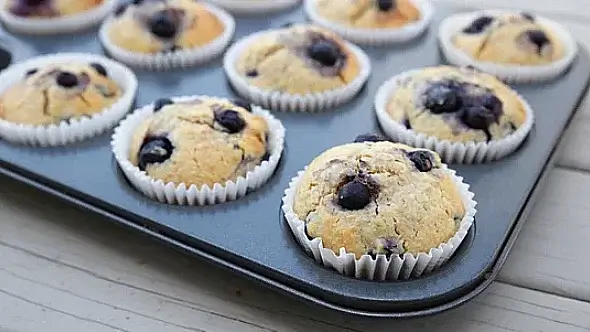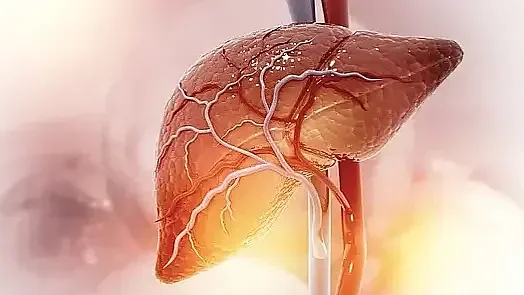Best Fiber-Rich Foods for Liver Health
 Field of lentils
Field of lentilsUnderstanding Dietary Fiber's Role in Hepatic Health Management
The relationship between fiber-rich foods and liver health has emerged as a crucial area of focus in hepatology, particularly for patients managing non-alcoholic fatty liver disease (NAFLD). Recent clinical research demonstrates that optimal fiber intake plays a fundamental role in maintaining hepatic function and potentially reversing early-stage fatty liver disease. This comprehensive analysis explores evidence-based dietary interventions focusing on the best fiber-rich foods for liver health, particularly in the context of NAFLD management.
The Hepatoprotective Mechanism of Dietary Fiber
Clinical evidence indicates that dietary fiber's beneficial effects on liver health operate through multiple pathways. Fiber consumption modulates gut microbiota composition, reduces inflammatory markers, and helps maintain optimal body weight—all crucial factors in hepatic health maintenance. Studies demonstrate that soluble fiber, in particular, helps regulate glucose metabolism and reduce hepatic fat accumulation.
What Makes a Food "Fiber-Rich"?
Fiber is categorized into two types: soluble and insoluble. Soluble fiber dissolves in water to form a gel-like substance, which helps regulate blood sugar and cholesterol levels. Insoluble fiber promotes regular bowel movements by adding bulk to stool. Both types are important for liver health, as they aid in reducing inflammation and mitigating risk factors associated with NAFLD.
Essential Fiber Sources for Optimal Liver Function
Incorporating specific high-fiber foods into your diet can significantly support liver function and overall metabolic health. Below are some of the best options:
Legumes and Pulses
Clinical research identifies legumes as premier sources of both soluble and insoluble fiber, with substantial hepatoprotective properties. Specific options include:
- Lentils (15g fiber per cup)
- Black beans (15g fiber per cup)
- Chickpeas (12g fiber per cup)
These sources provide sustained glucose release, reducing hepatic lipogenesis and supporting optimal liver function.
Whole Grains and Complex Carbohydrates
Evidence supports the inclusion of specific whole grains for enhanced liver health:
- Oats (containing beta-glucans)
- Barley (rich in resistant starch)
- Quinoa (complete protein profile with fiber)
These selections demonstrate superior fiber content while maintaining low glycemic impact, crucial for managing NAFLD.
Fruits
Fruits such as apples, pears, and berries are rich in soluble fiber and antioxidants. The pectin in apples and pears supports liver detoxification processes, while berries provide polyphenols that combat oxidative stress.
Cruciferous Vegetables
Clinical data supports the inclusion of fiber-rich cruciferous vegetables:
- Broccoli (particularly rich in fiber and sulforaphane)
- Brussels sprouts
- Cauliflower
These vegetables combine beneficial fiber content with compounds that support Phase II liver detoxification pathways.
Nuts and Seeds
Almonds, flaxseeds, and chia seeds are also excellent sources of dietary fiber that provide healthy fats. Flaxseeds and chia seeds are particularly high in soluble fiber.
Building a High-Fiber Meal Plan
Transitioning to a fiber-rich diet requires thoughtful planning to ensure balanced nutrition. Below is a sample day’s meal plan designed to support liver health:
Breakfast
- Oatmeal with sliced banana and a tablespoon of chia seeds
- Herbal tea or water with lemon
Lunch
- Lentil and spinach salad with olive oil and lemon dressing
- A side of steamed broccoli
Snack
- An apple with a handful of almonds
Dinner
- Grilled salmon with quinoa and roasted Brussels sprouts
- Mixed berries for dessert
This meal plan combines soluble and insoluble fiber sources to maximize benefits for liver function.
Therapeutic Implementation and Clinical Considerations
Dosage and Timing
Clinical protocols suggest a graduated approach to increasing fiber intake:
- Initial period: 20-25g daily
- Target range: 30-35g daily
- Implementation: Divided doses throughout the day
- Adequate hydration: Minimum 2L water daily
This structured approach minimizes gastrointestinal distress while maximizing hepatic benefits.
Monitoring and Adjustment
Regular assessment of the following parameters ensures optimal response:
- Liver function tests
- Inflammatory markers
- Body composition metrics
- Gastrointestinal tolerance
Common Myths About Fiber and Liver Health
- High-Fiber Diets Are Difficult to Follow: With proper planning, a high-fiber diet can be both simple and enjoyable.
- Only Soluble Fiber Matters: While soluble fiber offers significant benefits, insoluble fiber is equally important for maintaining digestive health.
- Supplements Are Just as Good as Whole Foods: Whole foods provide additional nutrients that enhance their health benefits.
Future Research Directions
Emerging research continues to investigate:
- Specific fiber types and their differential effects on hepatic function.
- Optimal fiber-to-fermentable carbohydrate ratios.
- Personalized approaches based on genetic and metabolic factors.
Conclusion
The implementation of fiber-rich foods for liver health represents a fundamental therapeutic strategy in modern hepatology. Incorporating these foods into your diet is not only practical but also effective for supporting liver health—particularly for those managing NAFLD. By understanding the types of fiber, their roles, and how to integrate them into daily meals, you can make informed dietary choices that enhance your well-being.
Share this article

Dr. Irene Paragas, MD
I am a Medical Doctor, Registered Nutritionist-Dietitian, and seasoned virtual professional. See Full Bio.
-
1. Solà E, Graupera I, Barreto R, et al. "High dietary fiber intake improves outcomes in NAFLD patients." J Hepatol, 2021.
-
2. Ma J, Fox CS, Jacques PF, et al. "Sugar-sweetened beverages and hepatic fat." Am J Clin Nutr, 2020.
-
3. Parker HM, Johnson NA, Burdon CA, et al. "Effect of dietary fiber on fatty liver biomarkers." Nutr Rev, 2021.
-
4. Tilg H, Moschen AR. "The intestinal microbiota and NAFLD." J Hepatol, 2020.
-
5. Zhang X, Wang H, Yin P, Fan H, Sun L, Liu Y. Effects of Dietary Fiber on Nonalcoholic Fatty Liver Disease. J Hepatol, 2023.
-
6. Reynolds AN, Mann J, Cummings J, Winter N, Mete E, Te Morenga L. Carbohydrate quality and human health: a series of systematic reviews and meta-analyses. Lancet, 2023.
-
7. Kalafati IP, Borges CA, Meule A, Oliveira A, Panagiotakos D. The relationship between fiber intake and NAFLD progression: a systematic review. Nutrients, 2024.
-
8. Wong VW, Chan WK, Chitturi S, Chawla Y, Dan YY, Duseja A, et al. Asia-Pacific Working Party on NAFLD guidelines 2024: Clinical practice guidelines. Hepatol Int, 2024.
Combining the DASH Diet with Intermittent Fasting Recent research has highlighted the potential benefits of combining the DASH diet with intermittent...
How Turmeric Helps Reduce Liver Fat Turmeric, a vibrant yellow spice derived from the Curcuma longa plant, has gained significant attention for its...
Weight Loss Psychology Quiz Weight loss isn’t just about eating fewer calories or exercising more; it’s deeply connected to your mindset, emotions, and...

You might enjoy more articles by
Dr. Irene Paragas, MD
 Disease
Disease Diets
Diets Recipes
Recipes Supplements
Supplements Management
Management Calculators
Calculators Quizzes
Quizzes Glossary
Glossary
























